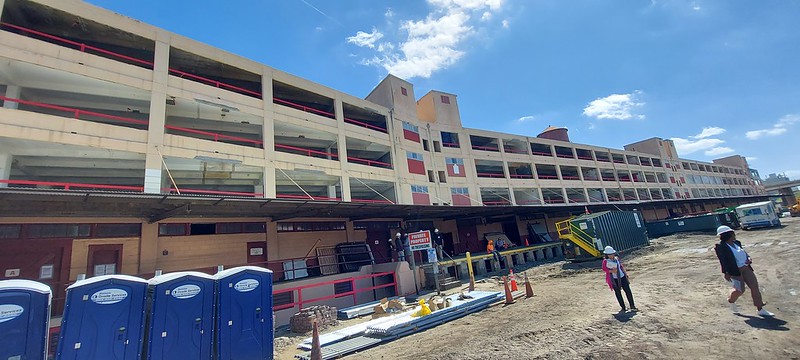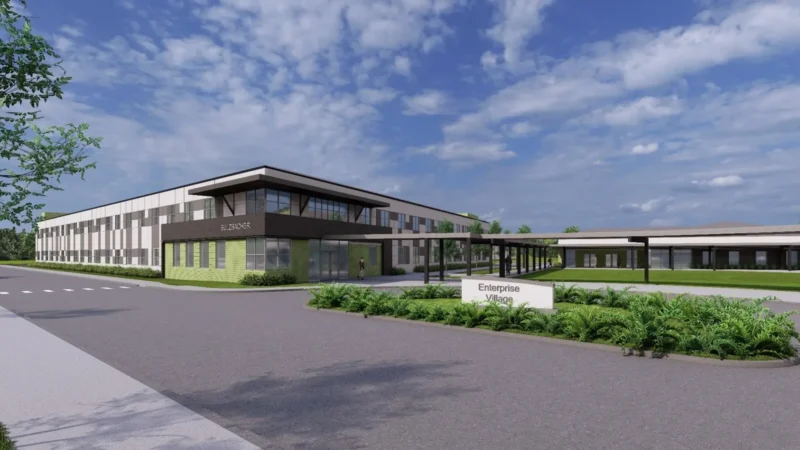
In much writing about urban development, the pro-density Yes In My Backyard movement and historic preservation are often presented as opposing philosophies. In Jacksonville’s case, however, YIMBYs and preservationists are natural allies in the fight to revitalize struggling neighborhoods and resolve the housing crisis.
Yes in my backyard

Standing for “Yes In My Backyard,” the YIMBY movement is the antithesis to the very human tendency for folks to want undesirable people and land uses kept away from their homes – the “Not In My Backyard” or NIMBY phenomenon. Where people described as NIMBYs typically oppose new development and changes in their neighborhoods, YIMBYs embrace a “more of everything” approach with especial emphasis on increasing housing stock. The central tenet of YIMBYism is that more, denser, and better designed development will reduce soaring housing costs while creating more vibrant urban spaces and greater quality of life.
As a philosophy, YIMBYism is nothing new – the term itself has been in use since at least 1993 – it emerged as a full-fledged movement in 2013 in the height of San Francisco’s housing and rent crisis. According to Max Holleran’s book on the movement, Yes To The City, early, largely Millennial advocates facing increasing rent and unafforability across the Bay Area began attending local government meetings where new housing proposals were being reviewed. They found that NIMBY residents criticized even small units and worked to cancel or stymie virtually any proposal. Determining that their rents, already among the highest in the country, would never stabilize without increasing the supply of units, the advocates organized to fight for more housing in the Bay Area.
YIMBY groups soon organized in other large cities where a constrained supply of housing had led to growing rents. As the housing crisis reaching national, even global proportions, the YIMBY movement has taken root in cities of all sizes. Today the YIMBY philosophy is growing in Jacksonville and other Florida cities whose historically affordable cost of living is increasingly slipping away.
Historic preservation: saving the past to save the future

In some areas, YIMBYism has been in conflict with the historic preservation movement. Historic preservation is about saving a city’s architectural and cultural heritage for the next generation, but in cases where preserving certain buildings precludes new construction, for instance where saving low-density, single-family houses precludes denser development, it certainly can lead to increased housing costs. There are also plenty of cases of neighbors using the levers of historic preservation in a particularly NIMBY fashion, for instance, residents of one residential highrise in Los Angeles invoked preservation to fight construction of second residential highrise nearby because it might block views of their Art Deco clock.
But in the YIMBY-vs.-preservation debate, context is everything. A dive into Jacksonville’s context shows that not only are the YIMBY and historic preservation movements compatible, they’re natural allies against a common foe that has bedeviled Jacksonville’s urban neighborhoods for decades: the wholesale demolition of homes.

Demolition, not preservation, is far and away the biggest culprit in the decline in housing stock in Jacksonville’s Urban Core. In the Jim Crow era, Jacksonville erased thousands of homes and even entire neighborhoods through discriminatory redlining, highway construction that tore through Black and working-class neighborhoods, and urban renewal projects that failed to spark renewal. Even decades later, when most cities had realized the “Godzilla strategy” of urban development failed to revive their urban spaces, Jacksonville continued apace, notably by razing most of the historic LaVilla neighborhood, which is only now starting to see the new development promised three decades ago. Even today, due to code enforcement, houses are routinely condemned and demolished all over the city, including many that could be renovated for less than new construction would cost. Compounding the loss is that the Urban Core has many examples of missing-middle housing, the various once-common styles of multifamily housing between single-family homes and large apartment buildings, as duplexes, quadruplexes and garage apartments. When structures like these are demolished, losing one building removes homes that could fit multiple families.
As a result of this widespread demolition, the population of Jacksonville’s Urban Core – the neighborhoods within the old city limits before Consolidation in 1968 – plummeted from 204,275 in 1950 to only 104,047 in 2010, a decline of more than 50%. In these cases, historic preservation in areas that embraced it like Riverside, Avondale and Springfield didn’t hinder new housing development, it saved housing that otherwise would be lost. The lost of so much is sobering, but looking forward it also presents an opportunity in the housing debate: as the Urban Core already has the basic road and utility infrastructure to support twice as many people as live there today, it’s Jacksonville’s secret weapon for increasing housing stock and fighting the crisis. As such, it’s a perfect area for YIMBYs and preservationists to work together.
Withintrification

Several Jacksonville neighborhoods and organizations have already embraced elements of both historic preservation policy and YIMBY thinking as part of their grassroots revitalization strategies. Jacksonville neighborhoods like LaVilla, Durkeeville and the Eastside are rich in history and culture, but the loss of population and housing stock over the years makes revitalization more difficult. At the same time, with developer interest the neighborhoods growing, they are feeling the pressures of gentrification, the changes that come when an influx of outside money increases the cost of living and often displaces the older residents.
To counter these problems, neighborhood groups have embraced policies of withintrification – revitalization that’s driven by the people already in the neighborhood. Withintrification means identifying assets in the community, bringing them together under common objectives, and raising the value of the place from within at a pace appropriate for revitalizing the existing community, not displacing it. The current residents of the community take the lead in revitalization, rather than newcomers or outside developers telling residents what they need and ultimately pricing them out.
LaVilla, Durkeeville and the Eastside are embracing new development to restore lost housing stock, increase density and bring investment dollars into the neighborhoods. Residents want new projects, they just don’t want to be replaced by it. One example of a major new project is LaVilla’s Johnson Commons, a partnership between JWB Real Estate Capital and Corner Lot Development Group. In this case, the project uses modern architecture, but has been designed with input from the community to respect what was lost in terms of density, scale and shape. It will replace long-empty lots with 91 townhomes in the heart of LaVilla, a true YIMBY victory if there ever was one.

At the same time, the neighborhoods are embracing historic preservation to save what’s left of the neighborhoods’ historic architecture and built environment. Durkeeville residents pushed for the Durkee Gardens area of the neighborhood to be declared a historic district. The Eastside is also pursuing historic district status, and LaVilla residents are considering it as well. These will be national register districts, which aren’t as restrictive as local districts. Residents of national districts aren’t prohibited from changing or demolishing their properties, but they have access to grants and incentives that can make restoration more feasible. This makes adaptive reuse projects feasible to turn old buildings into new assets for the community.
Examples currently in the works include the Eastside’s Debs Store project, which will restore a former grocery to the neighborhood while adding employment and banking services. Also in the Eastside, the Union Terminal Warehouse is tapping historic preservation and affordable housing incentives as part of an ambitious plan to turn an old industrial facility into a mix of 228 apartments (including 203 affordable or workforce housing units), retail and maker/artist space.
These Jacksonville neighborhoods are providing a withintrification model for others across the country. By embracing both new development and preservation of what’s there already, they also provide a model for how YIMBYs and preservationists can work together to fight the housing crisis.







